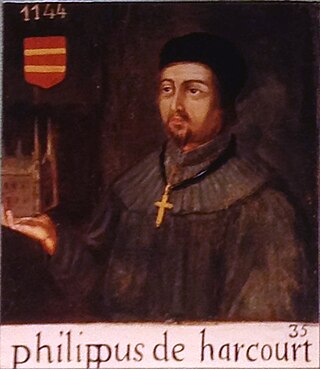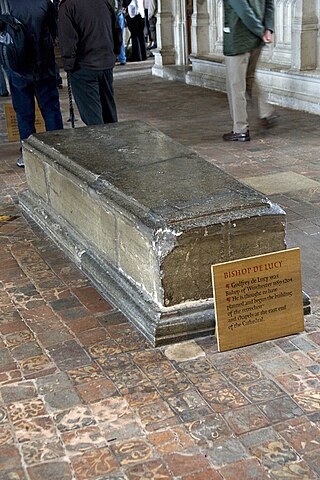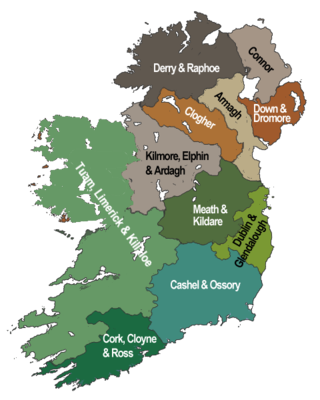Related Research Articles

Philip de Harcourt was a medieval Lord Chancellor of England and Bishop of Bayeux. He was unsuccessfully elected as the Bishop of Salisbury.

Godfrey Giffard was Chancellor of the Exchequer of England, Lord Chancellor of England and Bishop of Worcester.

John Waltham was a priest and high-ranking government official in England in the 14th century. He held a number of ecclesiastical and civic positions during the reigns of King Edward III and Richard II, eventually rising to become Lord High Treasurer, Lord Privy Seal of England and Bishop of Salisbury. He is buried in Westminster Abbey, London.
Nicholas Bubwith (1355-1424) was a Bishop of London, Bishop of Salisbury and Bishop of Bath and Wells as well as Lord Privy Seal and Lord High Treasurer of England.
Richard Peche was a medieval Bishop of Lichfield.
William Middleton was a medieval Bishop of Norwich.
Gilbert Glanvill or Gilbert de Glanville was a medieval Bishop of Rochester.
Henry Sandford was a medieval Bishop of Rochester.
Lawrence of St Martin was a medieval Bishop of Rochester.
William de York was a medieval Bishop of Salisbury.

Giles of Bridport was a medieval Bishop of Salisbury.
Robert Wickhampton was a medieval Bishop of Salisbury.
Walter Scammel was a medieval Bishop of Salisbury.
Henry Brandeston was a medieval Bishop of Salisbury.

Simon of Ghent was a medieval Bishop of Salisbury in England.

Godfrey de Luci was a medieval Bishop of Winchester.
Richard de la More was a medieval clergyman who was Bishop-elect of Winchester from 1280 to 1282.
William of Northall was a mediaeval Bishop of Worcester.

Sir John Hotham, 9th Baronet, DD (1734–1795) was an English baronet and Anglican clergyman. He served in the Church of Ireland as the Bishop of Ossory from 1779 to 1782 and Bishop of Clogher from 1782 to 1795.

The office of Archdeacon of Glendalough is a senior ecclesiastical role within the Anglican Diocese of Dublin and Glendalough, previously the Diocese of Glendalough. As such he was responsible for the disciplinary supervision of the clergy within the Diocese. The Roman Catholic succession of the role ceased long ago but it continues in the Church of Ireland.
References
- British History Online Bishops of Salisbury accessed on 30 October 2007
- Fryde, E. B.; Greenway, D. E.; Porter, S.; Roy, I. (1996). Handbook of British Chronology (Third revised ed.). Cambridge: Cambridge University Press. ISBN 0-521-56350-X.